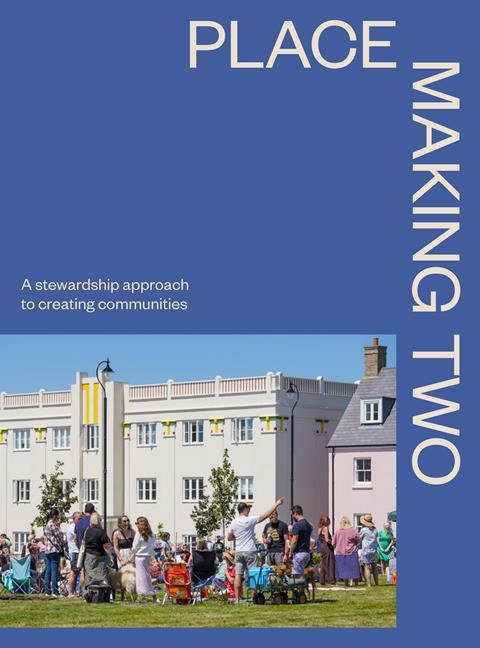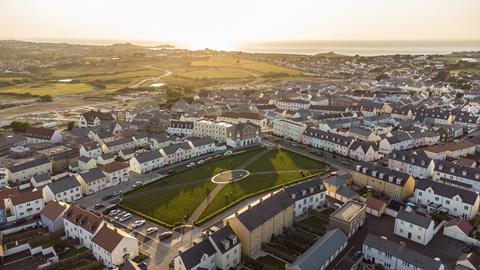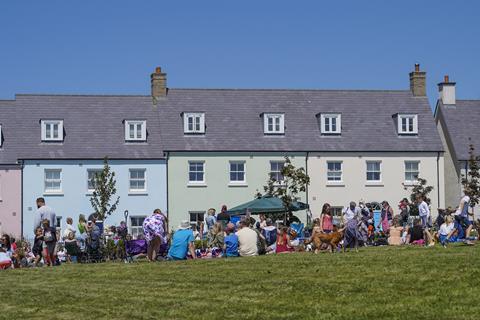In the drive to reach ambitious housing targets it is essential to plan for the long term care and sustainability of new developments, writes Hugh Petter

Stewardship and placemaking – they aren’t for every landowner, developer or every situation, and they aren’t going to solve the housing crisis but, if adopted more broadly, they will surely provide future generations with better places to live, work and play.
The current system is failing when it needs to be functioning at its best. Development by major housebuilders seeking quick profits, and a dysfunctional planning regime do not allow, unless in those rare circumstances where everyone is facing the same direction, the design and delivery of decent places.
In our report Placemaking Two - a stewardship approach to creating communities prepared jointly with Farrer & Co solicitors and Future Places Studio, and our previous Tomorrow’s Homes research, we have examined these strands and present an alternative way. In Placemaking Two we focus on ‘patient development’.
We caution, in rising to the challenge of building 300,000 new homes per annum, against creating “sleepy mono-use commuter towns”; we question the release of land to volume housebuilders; we advocate opportunities for smaller, less formulaic regional bespoke builders to play their part given the right economic and planning frameworks.

We contrast modern volume housebuilding with successful community developments and gather evidence from the re-set brought about by Covid-19 in how we now live and work. We champion ‘patient development’ as a model to bring land and housing forward, proposing new incentives for landowners to release land for longer term development whilst retaining an interest in it, and delivery of homes and new places where people will want to live - without forever jumping into their cars.
We recognise that more people want to live their lives locally, with sustainable, walkable neighbourhoods being a strong influence on placemaking strategy. It’s not new but absolutely key to our approach at Poundbury, Nansledan, and for Burghley in Stamford for example. We must also focus not just upon low carbon homes but creating places where people can live low carbon lifestyles.
In designing new places and new homes we are not building just for today but are also creating a legacy. We need considered development of standalone settlements, sympathetic extension of existing towns and the vision to understand their future expansion.
The red tape and bureaucracy of the planning process are not the sole issues; progress is severely hampered by single interest groups with the power to hold up development for years. A planning application can become a race to the bottom as the developer tries everything to secure a permission, and to release funding to start building.
That’s why it’s crucial to have the community ‘on side’. Those who will feel the effects of development should feel its future social benefits too (supply of affordable housing, community buildings, schools etc) and the economic warmth that comes with investment in the community in local materials, components and labour.

But it’s landowners and small developers who lie at the heart of future success. Landowners have the power to control development better by engaging in the process over time rather than selling land and then stepping away.
There is substantial evidence that ‘legacy development’ like this gives people more confidence that what’s promised at planning will be delivered. Private contracts between landowner and developer can also be more demanding (in a good way) than planning system controls, so enabling the landowner to require better aesthetic, sustainable outcomes.
Landowners can also insist on a proper mix so that developers must include affordable housing and commercial space, and there is mounting evidence that, with the right approach, more integrated developments will actually sell for a premium.

Small, often local developers have the capability and flexibility to step outside our production line building monoculture and be more innovative with higher build quality standards. As they work regionally their homes are better attuned to local markets. They are also more open to designs that fit with local context and the use of local labour including specialist crafts and trades.
Local Development Orders (LDOs) granted by a local authority in situations where the developer has shown through example that they can deliver a scheme to higher standards than required by the planning system can play a part too. The resulting reduction in red tape and risk for all parties is a huge incentive to respect the agreed parameters.
Over time buildings come and go, but the places we create endure. If we continue building poorly designed and poorly connected housing developments we are leaving a myriad of problems for the future. Instead we need new mixed-use places where people can meet their daily needs on foot or bicycle and where towns are properly permeable for future extension. Stewardship and placemaking are not new, they aren’t rocket science, but they really merit our attention and encouragement if we are to take responsibility not just for now, but for the future.
Postscript
Hugh Petter is a director of ADAM Architecture
















No comments yet